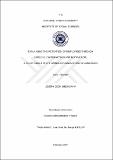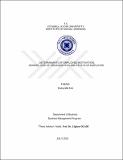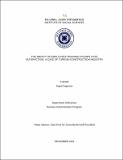DSpace Repository
EXPLAINING THE RETENTION OF EMPLOYEES THROUGH EMPLOYEE SATISFACTION AND MOTIVATION: A STUDY ABOUT STATE OWNED ORGANIZATIONS IN CAMEROON
JavaScript is disabled for your browser. Some features of this site may not work without it.
| dc.contributor.author | Mbongaya, Joseph Osoh
|
|
| dc.date.accessioned | 2019-05-26T10:38:15Z | |
| dc.date.available | 2019-05-26T10:38:15Z | |
| dc.date.issued | 2017 | |
| dc.identifier.uri | http://hdl.handle.net/11547/2194 | |
| dc.description.abstract | Working for a state owned organization in Cameroon is of a really high reputation but movement of employees from state to private owned organizations has been on the increase owing to adequate motivation and job satisfaction policies in the private owned organizations to absolutely attract more employees and to push up the economy from below. This study was to examine how employees are retained in state owned organizations in Cameroon. A model showing the correlation among four components was developed and tested. The four components include: job satisfaction, employee motivation, employee retention, and employee turnover. Drawn from the research model were three main hypotheses explaining the four components with a focused and an effectively designed questionnaire which composed of twenty one questions. The number of questions completed by the employees and all levels of management was 450. These questions were completed for the data analysis to mainly evaluate the employee retention in state owned organizations in Cameroon. The method of collecting data was face-to-face and the data collected were analyzed through the use of percentages supported by the research model to test the hypotheses. After some useful data was collected from the respondents on the retention of employee in state owned organizations in Cameroon, an in-depth look at the data showed that there were 300 employees and 150 all levels of management. These numbers constituted 450 being the reliable sample size of the research. Spearman correlation coefficient analysis was used in the findings and in the subsequent analysis to determine the strength of the relationship among four factors. Respondents’ answers were positively correlated to key areas of job satisfaction and motivation and their challenges on employee retention and employee turnover. This indicates that the variables and the components are reliable and the correlation among the components is positive. The results showed a high degree of dependence of the employees and all levels of management on job satisfaction and motivation. From the findings, the reliability statistics for all variables actually measures the levels of the four factors and there existed a positive correlation among these four factors which include: job satisfaction, employee motivation, employee retention, and employee turnover. The day-to-day supervisors of the organizations may endeavour to consider, unconditionally human resource policies all through the organizations. In doing so, management would achieve job satisfaction and motivation. Also, academicians may try hard to make a comprehensive research on the concept of employee retention. This would add to solutions organizations need to handle employee retention which has become a serious and perplexing problem for all service and product organizations as what the researcher found and written in this study is not sufficient to ameliorate these problems. | tr_TR |
| dc.language.iso | tr | tr_TR |
| dc.publisher | ISTANBUL AYDIN UNIVERSITY INSTITUTE OF SOCIAL SCIENCES | tr_TR |
| dc.subject | Job Satisfaction | tr_TR |
| dc.subject | Employee Motivation | tr_TR |
| dc.subject | Employee Retention | tr_TR |
| dc.subject | Employee Turnover | tr_TR |
| dc.subject | Employee | tr_TR |
| dc.subject | Organization | tr_TR |
| dc.subject | Management | tr_TR |
| dc.title | EXPLAINING THE RETENTION OF EMPLOYEES THROUGH EMPLOYEE SATISFACTION AND MOTIVATION: A STUDY ABOUT STATE OWNED ORGANIZATIONS IN CAMEROON | tr_TR |
| dc.type | Thesis | tr_TR |
| dc.publisher.firstpagenumber | 1 | tr_TR |
| dc.publisher.lastpagenumber | 109 | tr_TR |
Files in this item
This item appears in the following Collection(s)
-
Tezler -- Thesis [3470]



